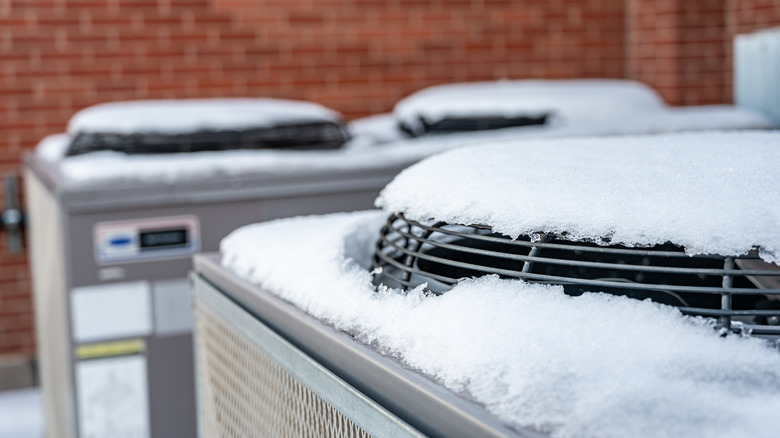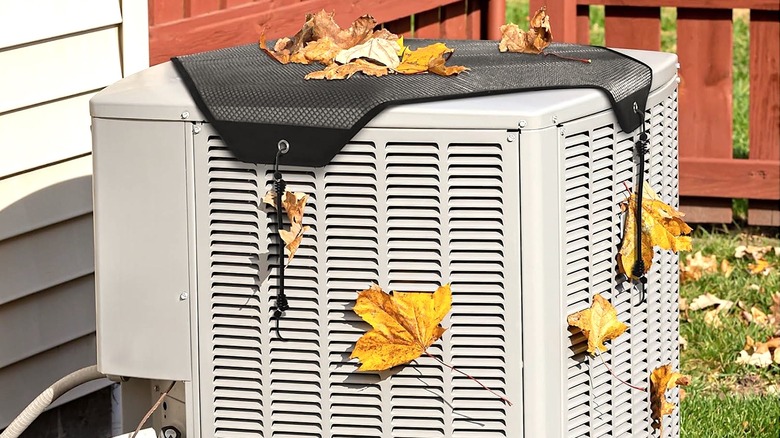Here's Why You Don't Need To Cover Your HVAC Unit This Winter
We may receive a commission on purchases made from links.
Whenever fall weather begins to break throughout the land, homeowners should be quick to run through any checklists meant to protect their space from damaging winter weather. While that can include everything from simple tasks like installing draft guards on doors and weather-proofing windows, ensuring your HVAC system — which is an acronym for Heating, Ventilation, and Air Conditioning – is ready for the coming chill should also be a priority.
Installing a fresh filter in the unit prior to switching on the heat is one of the best ways to help it run smoothly in winter. But once the interior unit has been tended to, the question becomes what to do with the exterior HVAC fixture, which is actually called the condenser. That unit is, after all, exposed to the elements for the duration of the season, enduring frigid temperatures, snow and ice depending on where you live. From a purely logical standpoint, throwing a tarp over the unit for a few months probably seems like a very good idea.
But doing so is not entirely necessary, as units from the most notable AC makers are specifically designed and manufactured with materials that can withstand extreme weather conditions. That includes the fan blades in internal components as well as the exterior box and grate, which are typically coated in a durable finish. Those materials are not impervious to decay, however. As it happens, putting a tarp over your exterior condenser can trap moisture inside and thus potentially expose the unit to undue rust.
One specific type of HVAC cover could prove helpful
While throwing a moisture-trapping tarp over your HVAC's exterior condenser unit could result in premature rusting, some A/C pros agree that not all covers are bad. In fact, employing the right kind of cover to keep debris out of the unit may help ensure it'll be ready to run efficiently when warm weather returns, assuming you aren't incessantly turning it off and on.
By "debris" we mean leaves, twigs, and pine needles, which are the primary offenders when it comes to your HVAC system. Since those exterior units are typically fitted with open grates at the top to promote airflow, leaves, twigs and pine needles can easily fall right inside. And as they build up over time, they can obstruct airflow, prevent the fan from properly rotating, or even get lodged in the coils, causing heat exchange issues and potentially even a full system overheat. In extreme situations, dried leaves and pine needles can even become fire hazards.
But keeping those elements out of your HVAC unit is not as simple as just covering up the fan grate. As previously noted, it's important to find a breathable cover to prevent he buildup of moisture. Thankfully, there are several companies out there making breathable mesh coverings specifically designed to keep such debris out. You can even pick one up through Amazon for as little as $14.99. Apart from a mesh tarp, you'll still need to remove collected leaves from on and around the unit to keep it protected in the winter. Trimming back any overhanging bushes or tree branches can also help in this endeavor.

